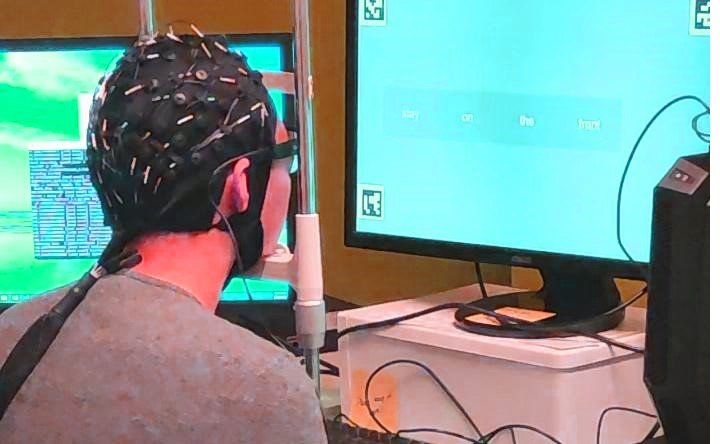A revolutionary AI development has emerged as a groundbreaking leap forward at the intersection of artificial intelligence and neuroscience, promising to bridge the gap between thoughts and text. This cutting-edge AI technology can decode the intricate patterns of human thought and seamlessly convert them into written text. Representing a significant stride in the realm of mind-reading technologies, this innovation holds the potential to revolutionize communication, offering a direct channel from the depths of the human mind to the written word.
As we stand at the precipice of this new frontier in AI development, the implications for fields ranging from medicine to communication are profound, sparking both excitement and ethical considerations about the boundaries of privacy and cognitive exploration.
A new artificial intelligence system that is capable of turning silent thoughts into text has been disclosed by researchers from the GrapheneX-UTS Human-centric Artificial Intelligence Centre at the University of Technology Sydney (UTS).
This attempt, which aims to improve communication for people unable to speak due to a stroke or paralysis, was directed by a prominent professor named CT Lin, a first author named Yiqun Duan, and a Ph.D. candidate named Jinzhou Zhou.
Translating Thoughts Into Texts
An electroencephalogram EEG Technology was used to measure the participants’ electrical brain activity while silently reading texts. The participants donned a cap that recorded their brain activity.
After that, the EEG data was analyzed by an artificial intelligence (AI) model developed by the researchers and given the moniker DeWave. This model translated the brain signals into words and sentences that made sense.
“This research represents a pioneering effort in translating raw EEG waves directly into language, marking a significant breakthrough in the field,” stated researcher Lin.
“It is the first to incorporate discrete encoding techniques in translating brain activity into text, bringing a novel approach to neural decoding. He added that integrating massive language models opens up new neurology and artificial intelligence vistas.
The developed system is portable and does not require invasive procedures, unlike other technologies that require invasive measures such as brain implants or extensive MRI equipment.
It is a divergence from conventional methods since it can do word-level segmentation without needing additional assistance, such as eye-tracking, which makes it applicable to everyday situational applications.
Individuals who cannot speak due to various diseases, such as stroke, may benefit from the technology because it offers an alternate form of communication. Furthermore, it can promote seamless contact between humans and machines, potentially aiding in operating technologies such as bionic arms or robots.
Compared to earlier decoding approaches, which were frequently evaluated on a small number of persons, the study, which was carried out with 29 participants, improves the dependability and flexibility of the technology.
Noise is introduced into the electroencephalogram (EEG) signals since they were captured using a cap rather than implanted electrodes. On the other hand, the research team claims that the study demonstrates state-of-the-art proficiency in translating EEG, surpassing the previously established benchmarks.
Read More: Celebrity AI Chatbots from Meta Are Now Accessible on All US Apps
What’s Next for the Team( New AI Development)
The researchers recognize that these issues exist even though the model has a higher level of competency in matching verbs than in matching nouns, with a predisposition towards producing synonymous pairs for nouns.
Currently, the translation accuracy score on BLEU-1 is forty percent. This score is a statistic that evaluates the degree to which machine-translated text is comparable to high-quality reference translations. This score is close to the 90% mark, and the team’s goal is to improve it to a level similar to that of standard language translation or speech recognition programs.
Previous developments in brain-computer interfaces, such as brainwave-controlled quadruped robots created in partnership with the Australian Defense Force, serve as the foundation for this groundbreaking technology.
Incorporating brain impulses into meaningful writing represents a significant step toward a future in which ideas can be converted into written language without difficulty, transforming communication for people with problems with speech delivery. The investigation results were presented in a publication called Papers with Code.


